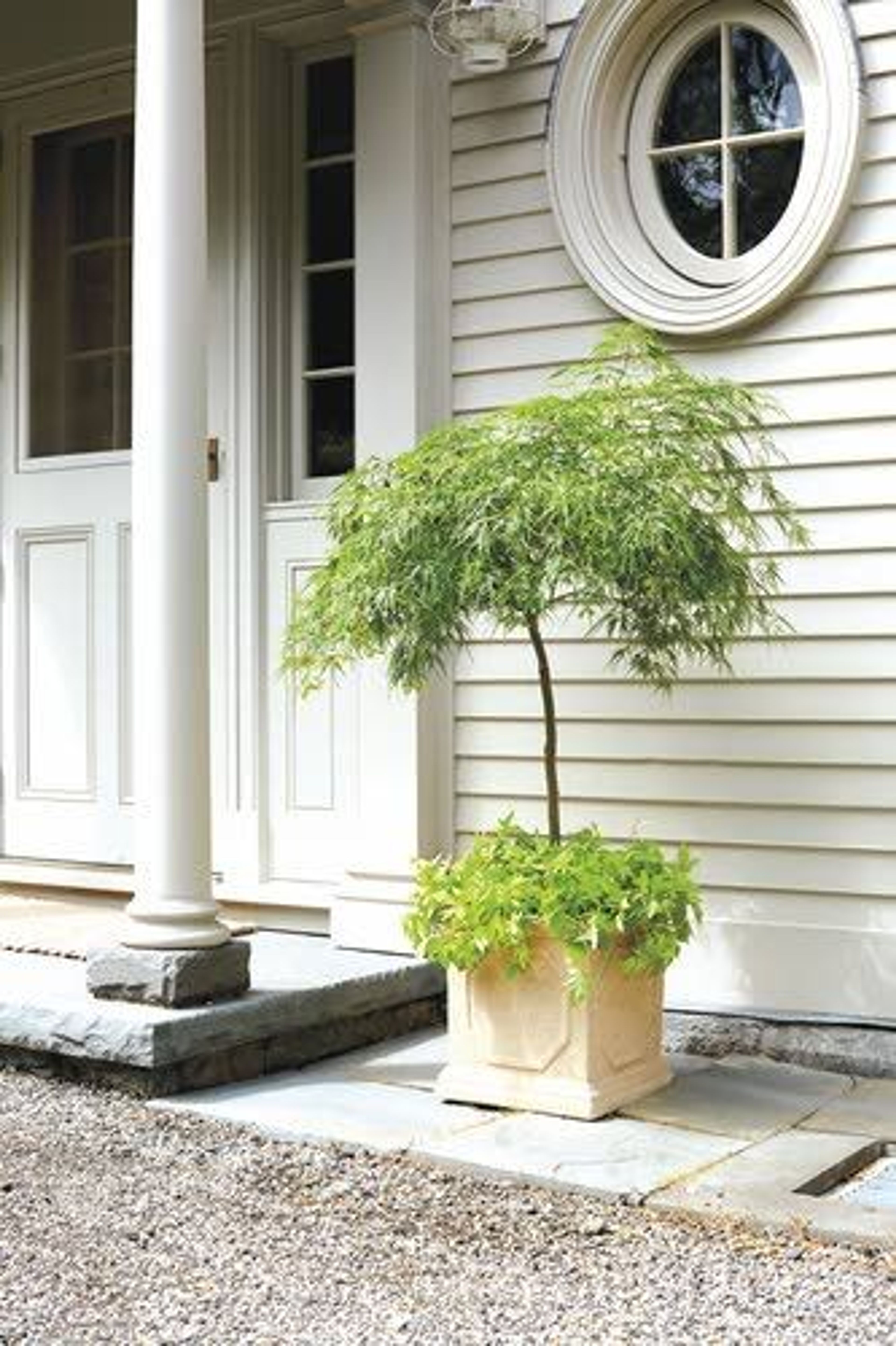Anyone can transform inexpensive pots and garden ornaments into pieces that look like stone antiques. The trick? Adding a simple coating of sand.
A few years ago, decorating director Kevin Sharkey and I visited Richard Jenrette, a renowned restorer of historical houses, at his fabulous American Federal home, Edgewater, on the banks of the Hudson River in New York. Outdoors, on the gracious columned porch, we saw what we thought were massive sandstone planters. Neither of us had seen such pots in a light-sand color before, and we asked our host about the source of such urns.
Richard laughed and told us to try to lift the planters, which we did, and we moved them with ease. Real stone ornaments are very heavy to move and can be rather expensive. We were then instructed in the process of making them, and neither Kevin nor I could wait to try it ourselves.
After a bit of experimentation, we mastered the how-to method, and we started "sanding" all sorts of lightweight fiberglass urns, pots, statuary and planters - and each piece looked great. When you try this fun technique for yourself, start by choosing a sand that will look good in or around your home. Sand is sold in different colors, and the grains and colors can be mixed and textured, if you wish. The paint color you use should match closely.
I applaud thriftiness, particularly when it is used in an artistic and value-added way. This method for transforming inexpensive, lightweight objects is an example of just that, and well worth the effort.
Prettier pots
Detailed fiberglass copies of all sorts of pots and ornaments can be transformed into excellent look-alikes. Classic designs like an urn take on an old-world appearance,but more modern shapes look great with a stonelike, sandy finish as well.
HOW-TO: Supplies needed: plastic bin, larger than planter; landscaping sand (available at home centers); planter or garden ornament, preferably fiberglass or plastic (if ceramic, use a plastic liner inside); multisurface paint in a pale, sandy color and paintbrushes; waterproof wood glue.
1. Fill bin about halfway with dry sand (if sand is damp, spread it in shallow bins and let dry first). Cover planter completely with multisurface paint; let dry.
2. Mix together 2 parts glue and 1 part paint (mixture will be thick). Brush mixture onto one side of planter, including a few inches inside rim. Working over bin, pour sand over glued area. Turn planter over and press into sand. Repeat with other side of planter. (For a planter with lots of intricate details, work in smaller sections, but don't overlap, or you'll have a seam.) Touch up as necessary with dabs of glue mixture and sand. Let dry overnight before using.
TIP: Sand-covered pots can be used indoors as well as outside. But be sure to apply carpet or felt glides to the bases to prevent scratches.
---
Group tours of Edgewater, in Barrytown, N.Y., are available upon request. Visit classical americanhomes.org/edgewater for more information.
---
Stewart's magazine and television shows focus on lifestyles. Questions may be addressed to Ask Martha, care of Letters Department, Martha Stewart Living, 601 W. 26th St., Ninth Floor, New York, N.Y. 10001. Questions may also be sent by e-mail to mslletters@marthastewart.com. Letters should include a name, address and daytime telephone number.









